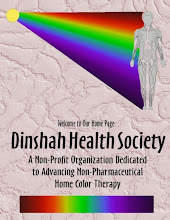
The University of Michigan Sleep Laboratory
JACKSON, MI – July 29, 2009 – In May of 2008, the University of Michigan opened its Sleep and Chronophysiology Laboratory, which is one of the world’s first laboratories devoted solely to research on how sleep and biological rhythms influence depression, substance abuse and other aspects of mental well-being. Research shows that light strongly affects a person’s sleep and circadian rhythm, so installing the right kind of light in the laboratory was crucial to its success. After meetings with many companies and designers, the University chose Full Spectrum Solutions to design and install its new lighting system for the laboratory.
To ensure the most accurate results, the bedrooms are structurally isolated from the main building using a suspension system. Full Spectrum Solutions designed the lighting control system using LabView Programming Software from National Instruments. In conjunction with UltraLux® T5 fluorescent high bay fixtures using a combination of BlueMax™ High Definition lamps yielding an amazing 96CRI at three different color temperatures of 3,500K, 5,900K, and 10,000K , researchers are able to vary the light to create any condition. “We worked closely with lighting scientist, Professor Mojtaba Navvab at the Enhanced Spectrum Laboratory at U of M and the doctors at the sleep lab to create a one of a kind lighting system,” said Michael Nevins, lighting engineer and CEO of Full Spectrum Solutions. “You can simulate almost any lighting condition you would like, even what it would be like on Mars.”
The light system can glow as bright as 20,000 Lux, a measurement equal to the brightest sunny day, and can be dimmed to just a red glow that doesn’t register in the brain in a way that affects melatonin (sleep hormone). “The program can be formatted to simulate lighting conditions in any time zone,” said Cal Nevins, control system engineer for the project. “For example, researchers can easily program the daylight structure to match Alaska’s so they can study the effect light, or the lack thereof, has on residents of Alaska.”
The center is set up so that a research volunteer can be entirely closed off from the outside world, for a couple of days or weeks, unable to tell what time of day it is. “What makes this lab unique is the ability to manipulate the light to create any condition,” said Professor Navvab. “After 72 hours, research participants have no true concept of time. They can only assume the time based off of the lighting levels at that time.”
The suites are specially equipped with banks of lights on the walls and ceiling that can be adjusted precisely by the center’s staff to simulate all times of day or night. This can allow a volunteer’s innate circadian rhythms — patterns of rest and activity in both body and mind — to be monitored or even altered temporarily. The facility can also be used for light therapy to combat problems such as depression.
“Already, we know that people with depression, seasonal affective disorders, anxiety disorders, alcoholism, and many more conditions suffer terrible disruptions to their sleep patterns, and that in turn, a lack of good-quality sleep worsens their conditions,” said Roseanne Armitage, a professor of psychiatry at the U-M Medical School, and director of the laboratory. “But there are so many unanswered questions about why this happens, how early in life it begins, and how it might be treated or prevented. This lab will help us do just that.”1
When asked how the lighting system is performing a year after the opening of the sleep center, Bob Hoffmann, Assistant Director of the lab reported, “I am pleased to say that it is a remarkable system. Light temperature and intensity are easily controlled and setting up a schedule for them is very simple with the LabView front end.”
Full Spectrum Solutions, Inc. supports lighting research through its affiliate memberships and partnerships with medical and scientific researchers. For more information, visit HUwww.fullspectrumsolutions.comUH, or email Lindsey Edwards at HUlindsey@fullspectrumsolutions.comUH
http://www.bignews.biz/?id=808230&pg=1&keys=lighting-sleep-depression-disorder



